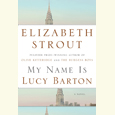Justice in Post-Peace Ireland
In a new novel, James Johnston lets the law, and the reader, decide what peace is worth
Few areas have experienced a history as violent and contentious as Ireland. The main issue—in modern times, at least—is the determination of the mostly Protestant northern counties to retain ties to Great Britain, and the determination of the Catholic counties to unify the island as a completely independent state. During “the Troubles,” which began in 1968, paramilitary forces on both sides fought a war of terror, mostly in the north, where a substantial Catholic minority was denied full civil rights. For thirty years, the news was full of brutal murders, torture, shootings, bombings, and demonstrations designed to inflame passions. Former U.S. Senator George Mitchell finally negotiated the Belfast Peace Agreement of 1998, but the terms included amnesty for all those convicted of crimes of terror. The prisons opened in 2000, releasing sometimes unrepentant murderers and bombers. Victims of their crimes were outraged and fearful. Was this justice? Knoxville writer James B. Johnston—a native of Belfast who left Ireland during the Troubles—poses the question in his new novel, The Price of Peace.
 A Catholic widow, whose husband and only son were killed by a botched IRA attack in Belfast in 1993, is outraged when the bomber is released as part of the peace accord. She hires a member of the Protestant Ulster Volunteer Force to make him suffer for his crime as she has suffered for her loss, but she doesn’t specify how he should suffer. The hired assassin simply shoots the bomber and then demands more money to kill another one. She pays him, and the second bomber also dies. Two other released bombers fear for their lives, and still another dresses as a priest to extract a confession from the widow.
A Catholic widow, whose husband and only son were killed by a botched IRA attack in Belfast in 1993, is outraged when the bomber is released as part of the peace accord. She hires a member of the Protestant Ulster Volunteer Force to make him suffer for his crime as she has suffered for her loss, but she doesn’t specify how he should suffer. The hired assassin simply shoots the bomber and then demands more money to kill another one. She pays him, and the second bomber also dies. Two other released bombers fear for their lives, and still another dresses as a priest to extract a confession from the widow.
During her trial, the characters in the courtroom—the defendant, counsel, the judge, witnesses, the jury, and even some relatives of the slain bombers—are for the most part decent people, striving for justice. As Johnston writes, “Almost without exception, when faced with the death and injuries of loved ones, families would plead that there be no retaliation. But almost without exception, those families sought closure through their faith in the justice system. Even when they were able to forgive, they expected the perpetrators of violence be brought to justice.”
The Price of Peace is principally a courtroom drama. The jury hears all the evidence. The reader reads the evidence and also the legal arguments beyond it. How did the widow mean the released bombers to suffer? Did the killer blackmail her to extract the second payment? What did she actually tell the fake priest? On page 139, Johnston asks the reader to vote on guilt or innocence in the two murders before the jury deliberates and reaches a verdict. Plenty of questions remain, however. Principal among them: what is justice? Johnston leaves it for readers to decide as they ponder this unsettling novel.


